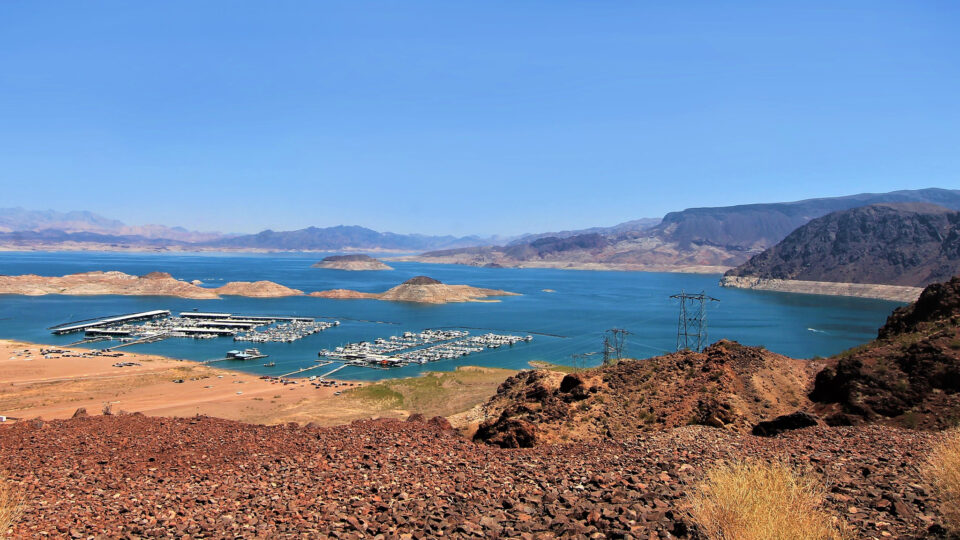Lake Mead is the reservoir that was formed by the Hoover Dam on the Colorado River. The lake spans the Arizona-Nevada border. It is the largest reservoir in the United States in terms of water capacity. The lake is part of a system that supplies water to at least 40 million people in seven states and in Northern Mexico.
As of August 22, this year, Lake Mead was filled to just 35% of its capacity. This low water level is happening while 95% of the land in nine Western states is under some level of drought conditions and 64% of the land is under extreme drought conditions. A so-called megadrought has been going on for 22 years and may be the worst dry spell in the region in twelve centuries.
As of the end of July, the water elevation at the Hoover Dam was 1,067 feet above sea level, the lowest it has been since April 1937 when the lake was still being filled after dam construction. The level has dropped by 132 feet since July 2000. At maximum capacity, Lake Mead reaches an elevation of 1,220 feet and holds 9.3 trillion gallons of water.
With Lake Mead at 35% of capacity, Lake Powell on the Colorado at 31%, and the entire Lower Colorado system at 40%, water allocations for the coming water year are being cut back. Mexico will see a 5% reduction, Nevada will be cut 7%, and Arizona will lose 18% of its apportionment. This unprecedented official declaration of a water shortage demonstrates the severity of the drought and low reservoir conditions.
**********
Web Links
Lake Mead Drops to a Record Low
Photo, posted August 7, 2018, courtesy of Renee Grayson via Flickr.
Earth Wise is a production of WAMC Northeast Public Radio.
